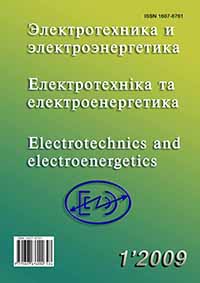STUDY OF TRANSITIONAL REGIMES IN SERIAL CONNECTION OF SERIES DC MOTORS
Keywords:
Electric motor, regulation, impulseAbstract
The effective anti-skidding system for rolling stock of railways with the traction direct-current motors isoffered and investigated. In the article the model for the investigation of the transient state of the direct
current motor of series excitation for the series connected motors is presented. The results of
electromechanical processes modeling happened at skidding of wheel pairs of railway rolling stock are
given.
References
Басов Г. Г. Розвиток електричного моторвагонного рухомого складу / Г. Г. Басов, С. І. Яцько. – Харьків : Апекс+, 2005. – 248 с.
Преобразовательные полупроводниковые устройства подвижного состава / Ю. М. Иньков, Н. А. Ротанов, В. П. Феоктистов, О. Г. Чаусов – М. : Транспорт, 1982. – 263 с.
Андриенко П. Д. Исследование динамики сериесного электродвигателя с различными импульсными схемами регулирования / П. Д. Андриенко, А. О. Каплиенко, С. И. Шило, И. Ю. Немудрый // Електротехніка та електроенергетика. – 2007. – № 1. – С. 4–8.
Акимов Л. В., Долбня В. Т., Клепиков В. Б., Пирожок А. В. Синтез упрощенных структур двухмассовых электроприводов с нелинейной нагрузкой // Под общей редакцией В. Б. Клепикова. – Харьков : НТУ «ХПИ» ; Запорожье : ЗНТУ, 2002. – 160 с.
Downloads
How to Cite
Issue
Section
License
Copyright (c) 2017 P. D. Andrienko, S. I. Shilo, A. O. Kaplienko, I. Yu. Nemudry

This work is licensed under a Creative Commons Attribution 4.0 International License.
Creative Commons Licensing Notifications in the Copyright Notices
Authors who publish with this journal agree to the following terms:
Authors retain copyright and grant the journal right of first publication with the work simultaneously licensed under aCreative Commons Attribution License that allows others to share the work with an acknowledgement of the work's authorship and initial publication in this journal.
Authors are able to enter into separate, additional contractual arrangements for the non-exclusive distribution of the journal's published version of the work (e.g., post it to an institutional repository or publish it in a book), with an acknowledgement of its initial publication in this journal.
Authors are permitted and encouraged to post their work online (e.g., in institutional repositories or on their website) prior to and during the submission process, as it can lead to productive exchanges, as well as earlier and greater citation of published work.

